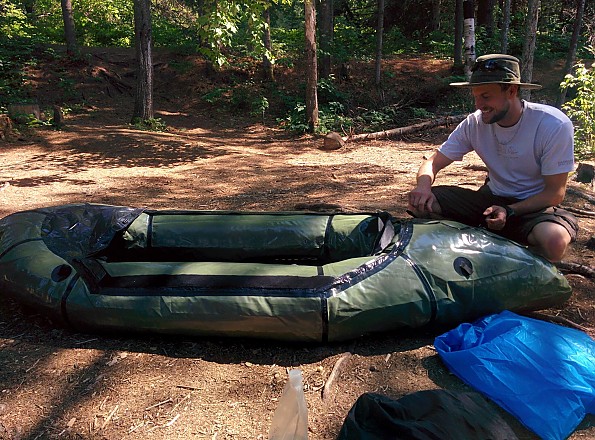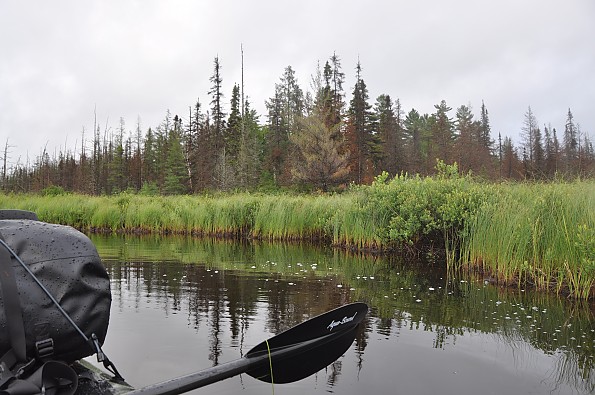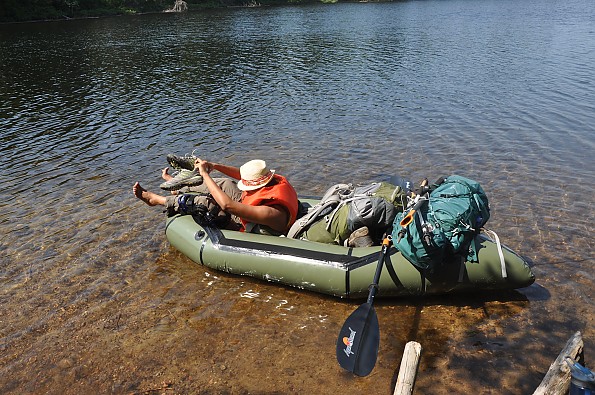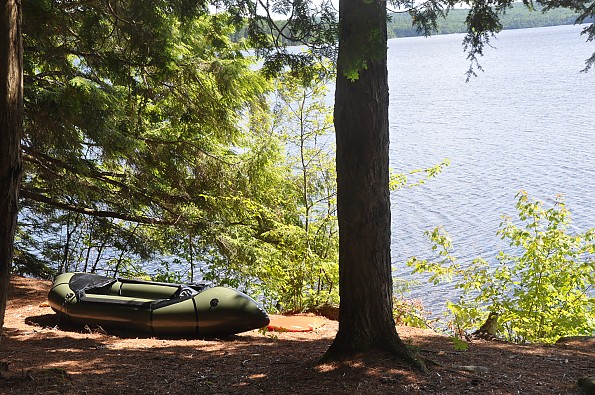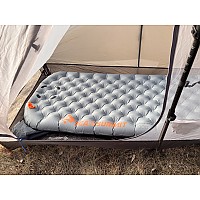Alpacka Raft Mule
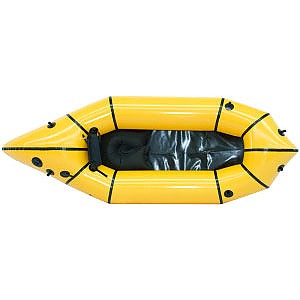
This pack raft has been a game changer in the types of trips that I am able to do. I've owned the raft for six months and it is now a key part of my gear. I haven't taken it through any rapids yet — mostly calm waters on lakes and rivers within Southern Ontario — so my review is limited to those uses. It is very light (a bit over 5 lbs), and impressively strong. I am taller (6'2"), and usually carry a lot of gear so the Mule's larger specifications were perfect for me.
Pros
- Completely changes the types of trips you can do and places you can see
- Lightweight (weighs just over 5 lbs)
- Very durable/rugged
- Ability to handle a lot of weight (I've had two people plus all their gear in it; it wasn't ideal, but it worked fine)
- Perfect for taller people like myself (6'2")
Cons
- Doesn't track so well in the water, but then again, it's not meant to be a kayak or canoe
- They are expensive
Like most of my gear, I did a lot of research before purchasing this pack raft. At first I was exploring inflatable kayaks, however they were too heavy for hiking long distances with. The Alpacka Raft was exactly what I was looking for — something that was light which I could carry for long distances, yet cross lakes and float down rivers when needed.
The solid reputation of the rafts was also something that helped me in my decision as the price tag on it easily make it the most expensive piece of gear that I own. So far I have been very happy with the purchase and am always looking for opportunities to put it to use.
Setup:
Inflating the Mule is straightforward. It comes with a an ultra lightweight bag with a plastic attachment that screws into to the larger air valve on the raft. Using this bag "accordion style" you fill up the bag with air, and compress the bag, pushing air into the raft.
At first I thought this approach would be gimmicky and take forever, but it works well. It really is a smart idea since the bag weighs and packs down next to nothing. Once the raft is mostly filled with air (see the picture), you unscrew the inflator bag, screw in the cap, and finish inflating the raft using the secondary (and smaller valve).
All in all, it probably takes around 6 or 7 minutes to get the raft fully pumped and ready for the water. The seat, and seat-back also need to be inflated and there are separate valves for each.
I purchased a Therm-a-Rest ProLite small sleeping mattress which I inflate and put on the floor of the raft for extra durability (the Alpacka Raft website recommends this to reduce the wear and tear on the floor, especially if you transport gear in the raft which I do).
There are several attachment points for strapping down gear onto the Mule—4 on the front, and 2 in the back. I use bungie cords and crisscross them to fasten down my pack at the front.
Weather Resistance:
I ordered the spray deck with mine, which wraps around and prevents water from coming in from the top. I haven't done any white water with the raft so can't comment on that, but I have had it out when it's been pouring rain, and it did a good job of keeping my lower body protected and warm.
Room & Storage:
This raft is pretty spacious, even for those who are taller (I am 6'2"). I think I have really pushed the raft to the limits with respect to how much it can hold. It is a single person raft, however on one of my trips I took a friend with the raft (180 lb + 130 lb) + two 65L backpacks that were loaded with food and supplies for four days (one pack strapped on the back of the raft and one on the floor of the raft in between the two people). It was tight quarters, but it worked. You can get the idea from some of the pictures.
Packability:
Given the size of the Alpacka Raft Mule when inflated, it is shocking at how little space it occupies. The pack raft easily rolls up. You could strap it to the exterior back of your pack like some people do with their sleeping pads, however I keep mine rolled up inside my pack, as I often scrape my pack against trees, rocks, etc, and I don't want to needlessly put wear and tear the raft (although I am sure it could handle some abuse).
If people happen to be around when I take the raft out of the pack, they are astonished that I have been hiking with a raft in my pack the entire time. I also get some funny looks when people are slugging away portaging their canoes, and I walk by carrying the mule under my one arm.
Construction and Durability:
I've only owned this raft for six months, but it's been on several extended trips in the woodland parks of Southern Ontario. I have scrapped into rocks in shallow waters and as well branches from beaver damns, and there hasn't been any marks or visible signs of wear and tear.
I did have an issue with the seat not holding air for more than 30 minutes of paddling on my 3rd or 4th trip. I contacted Alpacka Raft and they quickly shipped me out a new seat without any problems at all. I was impressed with their customer service. I have been out on the raft several times since, and the new seat has been working great. I have had no issues with the raft itself.
The spray deck I ordered with it (Cruiser Spray deck) attaches with a zipper and velcro. During one of the trips it was dark and I was in a rush, after portaging across a beaver damn, I didn't fully attach the spray deck and parts of it were inadvertently trailing in the water. The velco portion ended up with a bunch of grass and debris in it ... I painstakingly removed these with tweezers afterwards, but I can see that over time the velcro would loose its effectiveness (like almost all velcro does).
Source: bought it new
Price Paid: $895 raft + $200 (cruiser spray deck) = $1095


